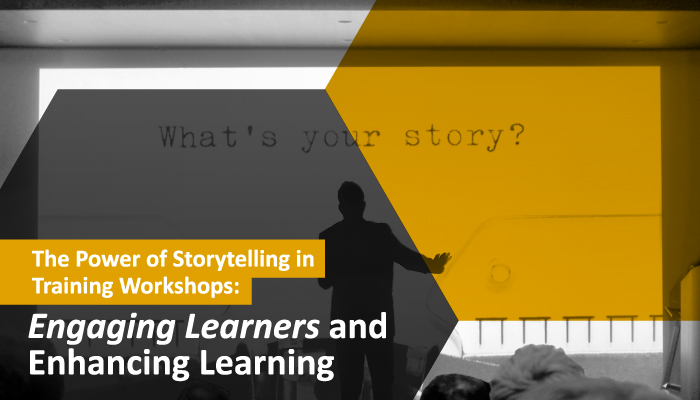
“Once upon a time.” Hearing those four words is a powerful signal for children everywhere that good things are about to happen. Those four words tell children that the story they are about to hear will be filled with wonder and excitement while being warmly familiar and predictable in a good way.
Interestingly, the goals of telling a story to children are similar to the goals trainers should have when using storytelling in their training workshops.
In training workshops for trainers, incorporating storytelling can help with various challenges, from breaking down abstract concepts to keeping participants engaged throughout the day. Here are some ways that you can use storytelling to enhance your training workshops:
Storytelling Opens The Mind To Possibilities
It’s easy for workshop participants to get distracted when their trainer is explaining abstract or complex concepts. However, when you take those challenging concepts and build a story around them, suddenly you have the student’s attention. A good story makes people lean in. They want to hear the ending: It’s human nature. Using analogies or real-life examples, you can help learners see how the concepts apply in practical situations.
For example, if you are teaching time management workshops, you might tell a story about a busy executive who struggled to balance work and family obligations. By illustrating the challenges and solutions in a real-world context, learners are more likely to understand and retain the information.
Storytelling creates a sense of excitement and anticipation
Long training workshops can be a challenge for even the most enthusiastic learners. To keep participants engaged throughout the day, incorporate stories that break up the monotony of lectures or slideshows. Stories can be used to introduce new topics, illustrate key points, or provide a much-needed break from more dense material.
In addition, trainers can use storytelling to create an emotional connection between the learners and the material. By sharing personal anecdotes or stories from your own experience, you can build rapport with the group and make the material more meaningful.
Storytelling encourages participation
Storytelling can be used to encourage participation by inviting learners to share their own experiences or ideas. For example, after telling a story about the best customer service experience you’ve ever had, you can encourage participants to share their customer service stories. Then, use all those stories to connect what they have in common. Incorporating storytelling into your training workshops can make the material more relatable, engaging, and memorable for learners. Whether you are teaching abstract concepts, trying to keep learners engaged, or encouraging participation, stories can be a powerful tool for enhancing your training workshops.
Storytelling provides context
Sometimes, it’s difficult for learners to see the bigger picture or understand how a particular skill or concept fits into the larger context of their work or industry. Using storytelling to provide context, learners can see how the material they are learning relates to real-world situations.
For example, suppose you are teaching a workshop on marketing strategies. You might tell a story about a company that struggled to increase sales until it implemented a particular marketing tactic. By showing how the material is relevant to real-world situations, learners are more likely to see the value and importance of what they are learning.
Storytelling encouraging reflection and application
Finally, trainers can tell stories to encourage learners to reflect on what they have learned and apply it in their own work or life. By asking questions or prompting discussion after a story, learners can consider how they might use the lessons learned in their own situations.
For example, after telling a story about a successful negotiation, you might ask participants to reflect on their negotiation skills and what they might do differently. By encouraging reflection and application, learners are more likely to retain the material and make meaningful changes in their work or life.
Elements of a Good Storytelling
- The listener needs to trust the storyteller. People’s feelings about the storyteller influence reactions to the story.
- The more people identify with a story, the more powerful its message will be.
- Keep it simple.
- Stories are at their best when listeners can work out the story’s meaning for themselves.
Conclusion
Incorporating storytelling into your training workshops can make a significant impact on your learners’ engagement and learning outcomes. By using storytelling to open minds, create excitement and anticipation, encourage participation, provide context, and promote reflection and application, you can enhance the effectiveness of your training workshops. Remember, a good story needs to be relatable, simple, and delivered by a trustworthy storyteller. So, why not take action and incorporate storytelling into your next training workshop? Your learners will thank you for it!